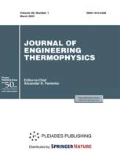Abstract
Although the total energy demand in the residential sector is rather high, the density of its request is very low because of its high distribution on the territory. Thus, in the case of fragmentation of the demand, it is hard to obtain economies of scale that can lead to a direct economy convenience in energy saving measures. By facing these characteristics of the residential consumption, specific plans that can lead to obtain energy savings are required. Also, it is important to act according to an integrated approach regarding the definition and realization of the potential energy saving measures: how ever complex the problem of energy saving in the residential sector can be, the real challenge in the coming years is to increase sustainability in the operating energy efficiency of existing buildings. In this work an original ILP model of optimal choice of energy-saving measures on the building envelope is presented; the relationship between energy benefit and the related cost due to a potential measure is explicated. Also, a practical example based on an existing building is shown, along with its benefits. The proposed mathematical model has demonstrated good versatility of application and the final results highlight optimal solutions according to the starting data and hypothesis, making explicit any energy and economic savings.
Similar content being viewed by others
References
Comini, G. and Cortella, G., Energetica Generale, 3d ed., Padova, Italy: SG Editoriali, 2001.
Cucumo, M.A., Kaliakatsos, D., and Marinelli, V., Energetica, Bologna, Italy: Pitagora, 2006.
Ausubel, J.H. and Langfors, H.D., Technological Trajectories and the Human Environment, Washington, DC: National Academy Press, 1997.
Tester, J.W., Drake, E.M., Driscoll, M.J., Golay, M.W., and Peters, W.A., Sustainable Energy. Choosing Among Options, Cambridge, Massachusetts: TheMIT Press, 2005.
Dall’o, G. and Galante, A., Abitare Sostenibile, Bologna, Italy: IlMulino, 2010.
Kosny, J. and Christian, J.E., Thermal Evaluation of Several Configurations of Insulation and Structural Materials for Some Metal Stud Walls, Energy Build., 1995, vol. 22,iss. 2, pp. 157–163.
Papadopoulos, A.M., State of the Art in Thermal Insulation Materials and Aims for Future Developments, Energy Build., 2005, vol. 37,iss. 1, pp. 77–86.
Kah, O. and Feist, W., Wirtschaftlichkeit von Wärmedämm-Maßnahmen im Gebäudebestand (Efficiency in Thermal Insulation-Actions in Buildings), Corp. Rept., Darmstadt, Germany, 2005
ENEA, http://efficienzaenergetica.acs.enea.it/tecnici/calcolo-re.pdf, Italy, 2010.
Hastings, R. and Wall, M., Sustainable Solar Housing, vols. 1/2, London: Hearthscan, 2007.
Energy Efficiency Commitment, http://eurlex.europa.eu/LexUriServ/LexUriServ.do?uri=OJ:L:29006:114:0064:0085:IT:PDF UK, 2008, p. 19.
Brealey, R.A., Myers, S.C., Allen, F., and Sandri, S., Principi di Finanza Aziendale, 5th ed., Milano: McGraw-Hill, 2007.
AEEG, http://www.autorita.energia.it/it/dati/gp27.htm, Italy, 2009.
Fourer, R., Gay, D.M., and Kernighan, B.W., AMPL: A Modeling Language for Mathematical Programming, 2nd ed., Pacific Grove, California: Thomson/Brooks/Cole, 2003.
Emilia-Romagna Region, http://energia.si-impresa.it/template/Guida-Compilazione-ACE-rev2.pdf, Italy, 2009, p. 22.
Author information
Authors and Affiliations
Corresponding author
Rights and permissions
About this article
Cite this article
Medici, M., Lorenzini, G. Mathematical ILP modeling for the optimization of the energy saving in the residential buildings sector. J. Engin. Thermophys. 23, 201–215 (2014). https://doi.org/10.1134/S1810232814030047
Received:
Published:
Issue Date:
DOI: https://doi.org/10.1134/S1810232814030047




